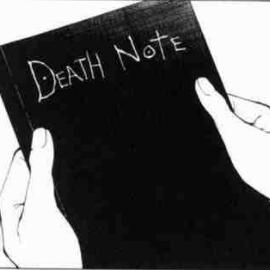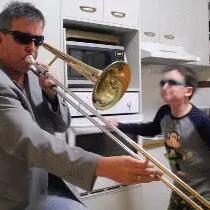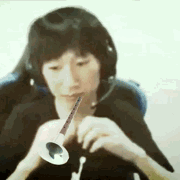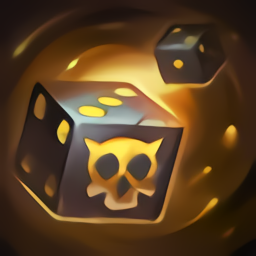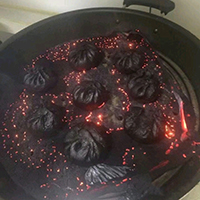一个倒计时。一个钩子。
#1383910
但是过度警觉已经遗留下来了,不可改变。
#1383913
所以说就是很简单的
PDA(Autism)+c-ptsd
PDA(Autism)+c-ptsd
#1383914
现在是可以删除线c-ptsd了
#1383915
和我两个月前的猜测一致
现在是能确认autism属性,因为前阵子忙,所以一直没来得及读资料。
>>Po.1383913
现在是能确认autism属性,因为前阵子忙,所以一直没来得及读资料。
>>Po.1383913
#1383917
这两个月也算是彻底确认自愈cptsd。
嗯,没读过任何指导。因为正在unmasking
嗯,没读过任何指导。因为正在unmasking
#1383918
……好吧好吧,我只是在嘴硬,确实还是会闪回,但是那也没有办法。
#1383919
已经痊愈了七七八八吧。
#1383920
操 现在又闪回了,该死啊。行,就这样,我可能还得跟这东西共同相处一段时间。
#1383927
>>Po.1383905
我知道了,因为我不仅读取话语,语气,也是将面部细节一些皱眉之类,直接等同于活人的那个表达的,所以因为我无法直接读取,直接感知活人的情感。许所以我只能从表象去入手,于是很多很多各种原因的就会更加防御,然后更何况有人还会说谎说谎说谎。
我知道了,因为我不仅读取话语,语气,也是将面部细节一些皱眉之类,直接等同于活人的那个表达的,所以因为我无法直接读取,直接感知活人的情感。许所以我只能从表象去入手,于是很多很多各种原因的就会更加防御,然后更何况有人还会说谎说谎说谎。
#1383929
是的认知同理心cognitive empathy 伪装的情商。社交技巧。但是never ending
overthinking非常非常痛苦,masking就是suffering。我因为太累之前avoiding,但也仍然是因为害怕。因为to be seen
就必须要masking。
有时候宕机shut down 有时候也是freeze。
再加上我本来就是没有什么情感,没什么情绪,没有什么欲求的人,aroace
……
我的阅读障碍也是后天的,都是cptsd后遗症。
我很久很久之前不是这样的,很久很久之前。
autism,是的,pda还是本质先天的nature。
overthinking非常非常痛苦,masking就是suffering。我因为太累之前avoiding,但也仍然是因为害怕。因为to be seen
就必须要masking。
有时候宕机shut down 有时候也是freeze。
再加上我本来就是没有什么情感,没什么情绪,没有什么欲求的人,aroace
……
我的阅读障碍也是后天的,都是cptsd后遗症。
我很久很久之前不是这样的,很久很久之前。
autism,是的,pda还是本质先天的nature。
#1383931
唉我确实有述情障碍,一直都是,后面又是解离,所以连我自己在害怕,我都不知道,而且更何况有的时候被提出的时候是很讨厌的,是我反而不得不要去宽慰,而且对方其实并不根本在不在乎,根本不在乎。
#1384105
ok,定论了,下半年和父母整理一下发育史,然后去南脑挂号。
#1384106
果然还有人被误诊为双相啊……
唉,
唉,
#1384108
>>Po.1384105
他们也认可了
毕竟这是绝对的事实
他们也认可了
毕竟这是绝对的事实
#1384109
这世界上,如果我此生还能说*我会在乎 和我会在乎的视角*的话。那么也只有他们二位了。
>>Po.1384108
>>Po.1384108
#1384122
……我之前是cptsd,所以我会藏。嗯,但确实我现在。有点unmasking上瘾,毕竟没有恐惧了。要记住,要竭力遏制,要筛选,筛选。用理性,理性克制,克制。目前只对父母,姐姐,郝川老师,提过发育史。
#1384124
……当然0104你是第一个听的,嗯。即使当时我连自己是pda都不知道。
#1384125
哦,真要说的话,岛怎么不算呢?因为以前几年在这里写日记,也都是在藏。
#1384268
我要找代抢么?
0 (0~9)单是双否
0 (0~9)单是双否
#1384322
好消息:我自己抢到票了
坏消息:狐师没有抢到票
好消息:江师疑似入坑pst 她喜欢戴娜拉!!!
坏消息:狐师没有抢到票
好消息:江师疑似入坑pst 她喜欢戴娜拉!!!
